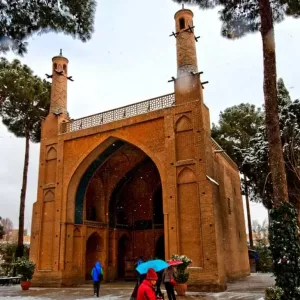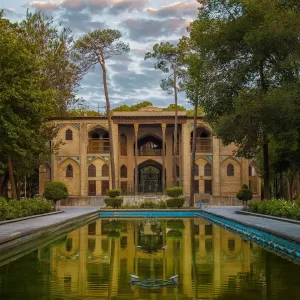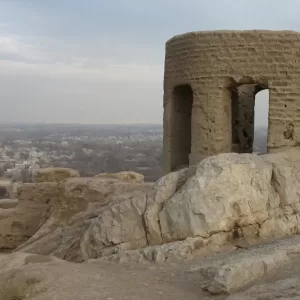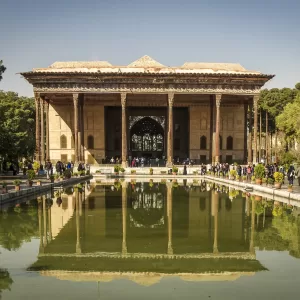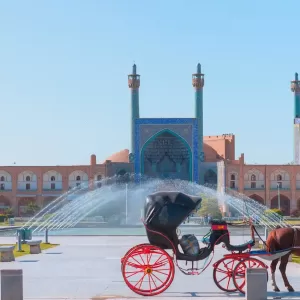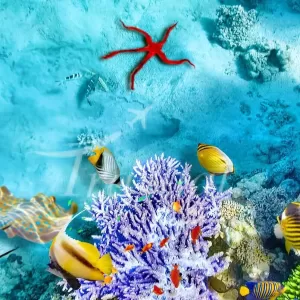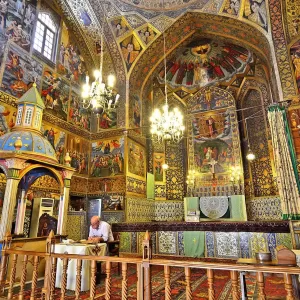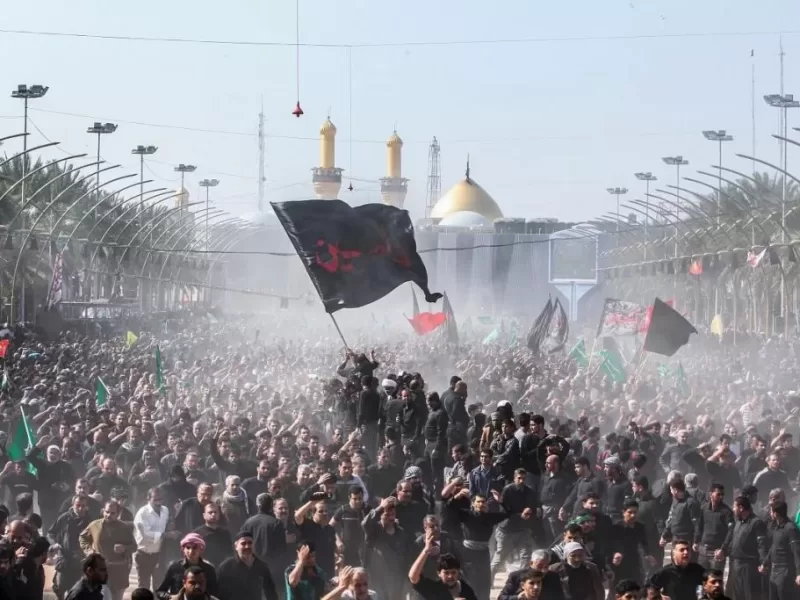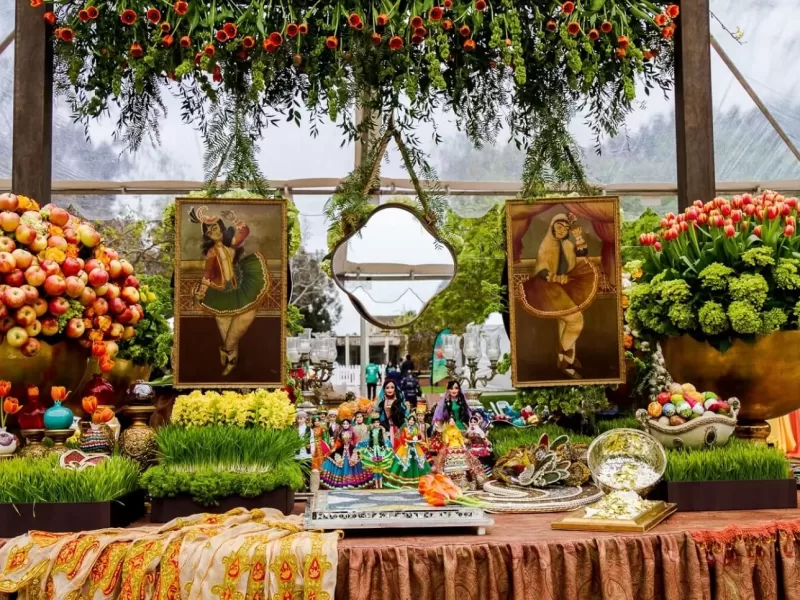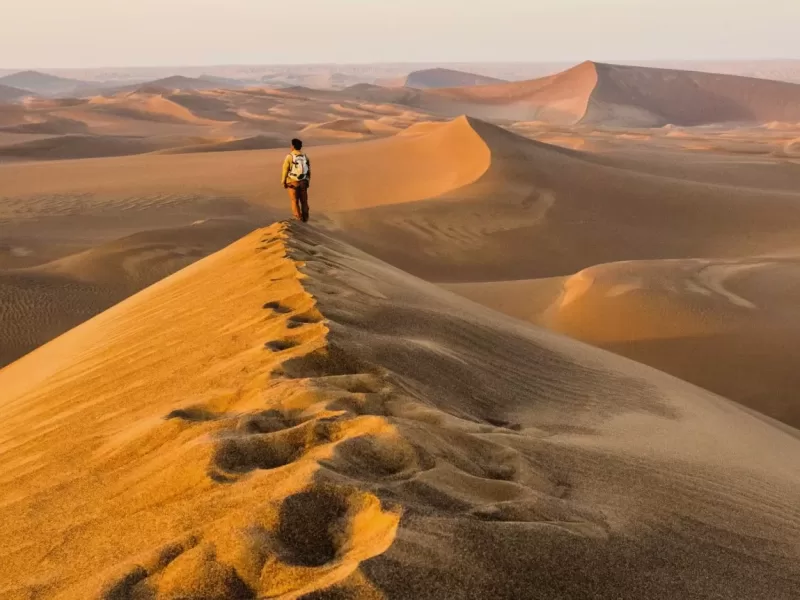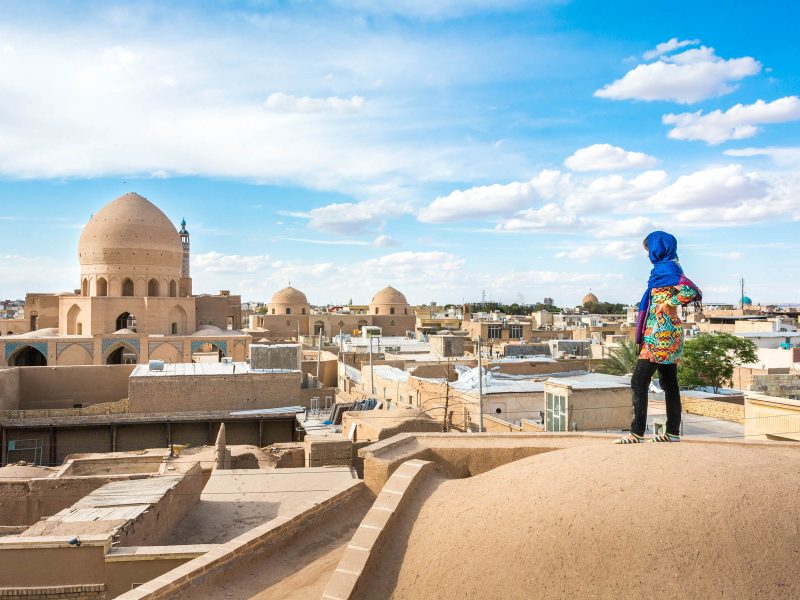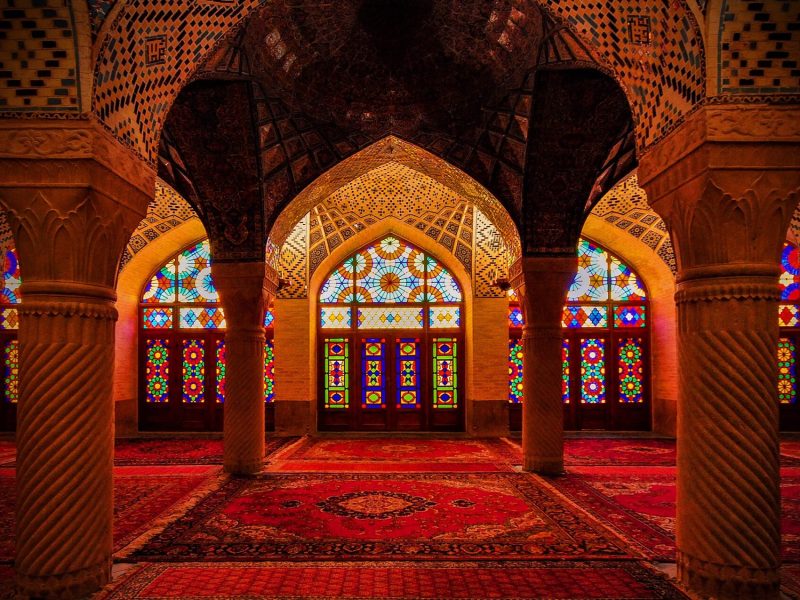The Majestic Khaju Bridge: A Masterpiece of Isfahan’s Architecture
Isfahan, the former capital of Iran, is renowned for its stunning architecture, intricate tile work, and rich cultural heritage. One of the city’s most iconic landmarks is the Khajoo Bridge, which spans the Zayandeh River and serves as a magnificent bridge, dam, and gathering place. In this blog post, we will delve into the fascinating history, architecture, and beauty of this stunning landmark. Join us on a virtual tour of the Khajoo Bridge with Radtravel Agency.
Brief Facts about the Khaju Brdige:
- Date built: 1650
- Architecture: Sheikh Bahaii
- Length: Over 130 meters
- The Khajoo Bridge was built during the Safavid dynasty in the mid-17th century.
- It is located in Isfahan, Iran and spans the Zayandeh River.
- It serves as a bridge, dam, and gathering place.
- It is one of the city’s most iconic landmarks and is a popular tourist destination.
History
The Khajoo Bridge was built during the reign of Shah Abbas II in the mid-17th century. This was a time of great prosperity and cultural growth in Iran, and Isfahan was at the center of it all. The Khajoo Bridge was constructed to serve several purposes. Firstly, it was designed as a bridge to connect the two sides of the river, making it easier for people to travel and trade. Secondly, it was built as a dam to control the flow of the river and to provide water for the nearby gardens and orchards. Finally, it was intended to be a gathering place for people to socialize, relax, and enjoy the beautiful surroundings.
Design and Architecture
The Khajoo Bridge is a true masterpiece of Persian architecture. It is a stunning example of the fusion of practical and aesthetic design, combining functionality with beauty. The bridge is made of stone and brick, and it features two main arches, as well as several smaller arches and recesses along the sides. The most striking feature of the bridge is the stunning tile work that adorns the arches and recesses. The tiles are decorated with intricate patterns, vivid colors, and beautiful calligraphy, which creates a breathtaking effect. The bridge also features several pavilions, which were used as gathering places, tea houses, and even as shops.
Description
The Khajoo Bridge is a truly magnificent structure that serves as a symbol of the beauty and grandeur of Isfahan. It is a popular tourist destination, and visitors can stroll along the bridge, taking in the stunning views of the river and the surrounding city. The Khajoo Bridge is also a popular spot for photographers, as its beautiful tile work and intricate details make it a perfect subject for capturing stunning images. Visitors can also enjoy a cup of tea or a snack at one of the many tea houses along the bridge, taking in the peaceful surroundings and the beautiful views of the river.
Best Time to Visit:
The Khajoo Bridge can be visited at any time of the year, but it is particularly beautiful in the spring and fall, when the surrounding gardens are in bloom. Visitors can also enjoy the bridge at night, when it is illuminated and the tile work takes on a magical quality.
FAQs about the Khajoo Bridge
Q: How long is the Khajoo Bridge?
A: The Khajoo Bridge is over 100 meters long.
Q: Who designed the Khajoo Bridge?
A: The Khajoo Bridge was designed by the famous Persian architect Sheikh Bahai.
Q: When was the Khajoo Bridge built?
A: The Khajoo Bridge was built in 1650 during the Safavid dynasty.
Q: Can I take photos at the Khajoo Bridge?
A: Yes, visitors are allowed to take photos at the Khajoo Bridge.
Q: What is the architecture of the Khaju Bridge like?
A: The Khaju Bridge is a beautiful and intricate structure. It features a series of arches and pavilions, and is adorned with intricate tile work and carvings. The bridge also features a central corridor with a dome, which provides shade and protection from the sun. The bridge is decorated with vibrant colors and intricate designs, making it a true masterpiece of Persian architecture.
Q: What makes the Khaju Bridge unique compared to other bridges in Isfahan?
A: The Khaju Bridge is unique in several ways. It is one of the largest and most beautiful bridges in Isfahan, and its intricate architecture and decoration make it stand out from other bridges in the city. Additionally, the bridge serves both as a bridge and a dam, making it a unique and important piece of Persian engineering.
Q: Can I walk on the Khaju Bridge and enjoy the views?
A: Yes, visitors can walk on the Khaju Bridge and enjoy the stunning views of the Zayande River and the city of Isfahan. The bridge is a popular tourist attraction, and many visitors come to admire its beautiful architecture and take in the views of the surrounding area.
Q: Is the Khaju Bridge a historical monument or just a bridge?
A: The Khaju Bridge is both a historical monument and a functional bridge. It is considered one of the finest examples of Persian bridge architecture and is recognized as a important piece of Persian history. Despite its status as a historical monument, the bridge remains in use and is an important part of daily life in Isfahan.
Q: Can I visit the Khaju Bridge at night?
A: Yes, visitors can visit the Khaju Bridge at night. The bridge is lit up after dark, making it a beautiful sight and a popular spot for night-time strolls.
Q: Are there any restaurants or shops near the Khaju Bridge?
A: Yes, there are several restaurants and shops near the Khaju Bridge. Visitors can find a variety of food and souvenirs in the surrounding area, making it a convenient place to stop for a bite to eat or to shop for local goods.
Q: What is the best time to visit the Khaju Bridge and why?
A: The best time to visit the Khaju Bridge is during the day, when visitors can admire its beauty and take in the stunning views. The bridge is especially beautiful in the late afternoon and early evening, when the sun is low in the sky and

